The virtual production infrastructure behind Fox Sports’ Stage B
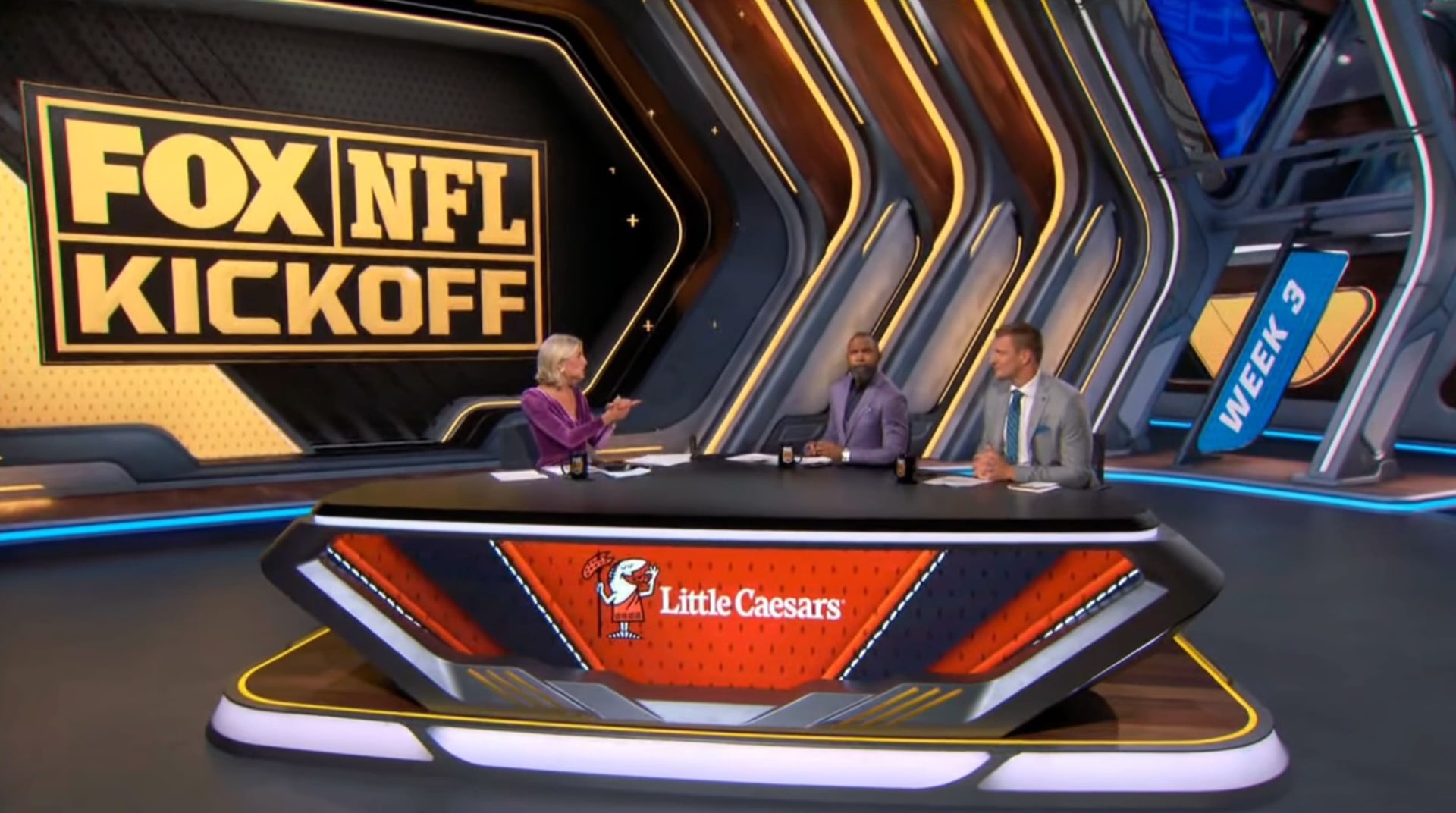
Subscribe to NCS for the latest news, project case studies and product announcements in broadcast technology, creative design and engineering delivered to your inbox.
Fox Sports has built what it describes as the world’s largest live multi-camera LED volume, but the technical achievement lies not in scale alone — it’s in solving the challenges that have limited virtual production in live production.
The network’s new Stage B incorporates 32 render engines working in coordination to deliver real-time, multi-perspective virtual environments for daily and weekly marquee programming, as well as future events like the 2026 FIFA World Cup.
The infrastructure is built to address limitations that have often forced broadcasters to choose between editorial flexibility and virtual production capabilities.
Unlike Stage A, which combines roughly one-third LED volume with two-thirds scenic, Stage B operates as an entirely LED-based environment. The LED volume spans just under 20 feet in height, with 42-foot-wide left and right walls, a 72-foot-wide back wall, and a complete LED floor surface with LED panels from ROE Visual.
“We’ve only done a few shows, but the ability for talent to move around in the space. Those grand shots, those wide shots that you see of the set, really helps sell that realism,” said Zac Fields, Fox Sports’ SVP of graphic tech and innovation and technical lead on the Stage B project.
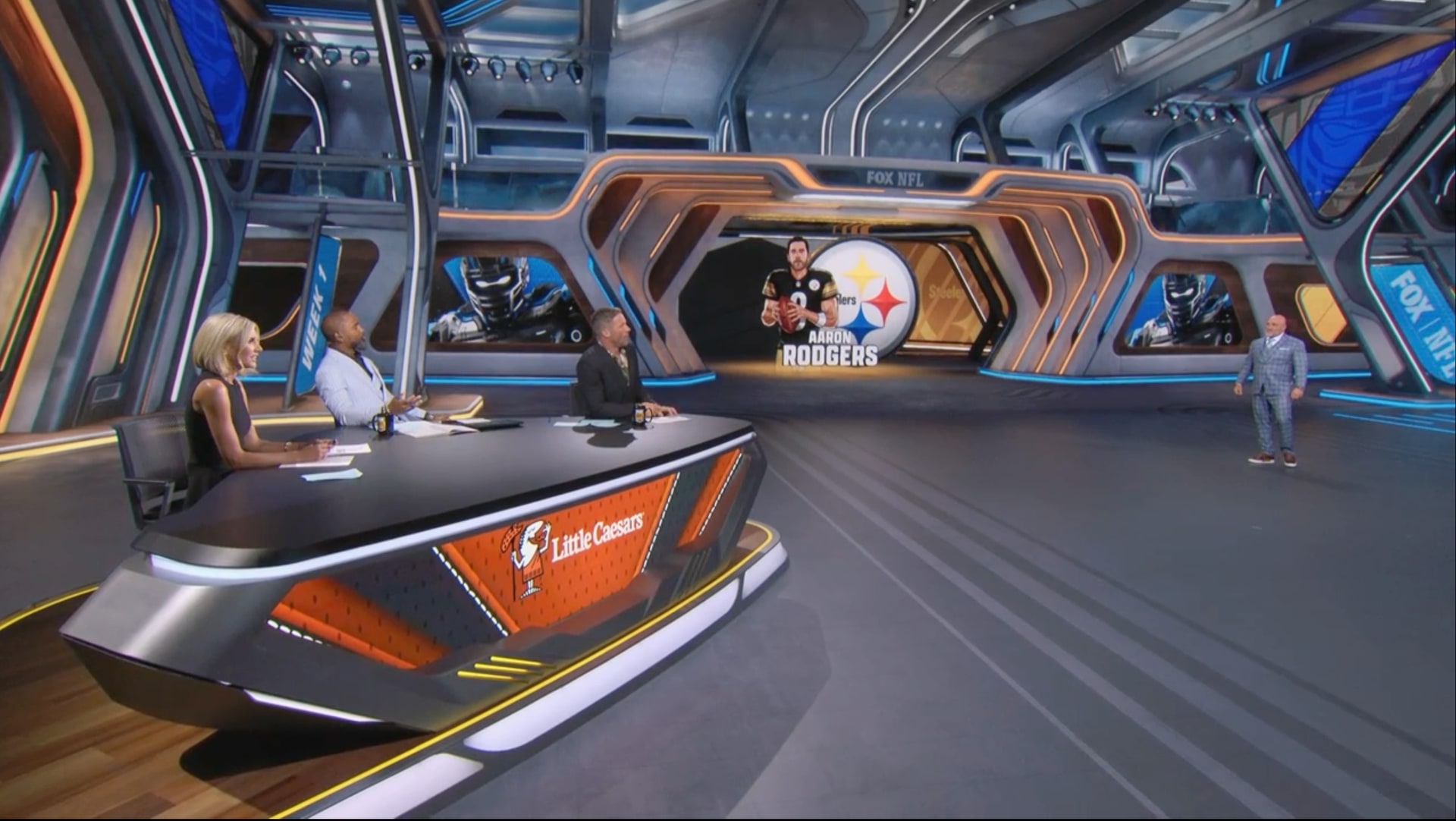
The scale of Stage B becomes evident in its raw specs: the LED walls contain 35,312,650 pixels while the LED floor adds another 12,730,368 pixels, totaling 48,043,018 individual LED elements that must be synchronized for each camera perspective.
Megapixel’s Helios processors manage this pixel density. They coordinate content delivery across the LED panels through the company’s GhostFrame technology. This system maintains microsecond-level synchronization across the entire display surface while simultaneously delivering unique perspectives for up to four cameras.
The facility supports the “Fox NFL Kickoff” pre-game program, which launched with the current football season and utilizes the full scale of the LED environment for what Fields described as “a grand set that has a multitude of functionality.”
Multi-camera rendering eliminates editorial constraints
Refined from experience with Stage A, the new stage includes 24 dedicated render workstations organized into GhostFrame slices. Each slice contains six render engines synchronized with individual camera tracking data, creating four simultaneous perspectives across the LED environment.
“Each GhostFrame is comprised of six renders that are timed perfectly with the assigned camera and its tracking data,” Fields explained. “There are four available slices, and there’s essentially 24 render engines running all timed up to power those different angles on the LED volume.”
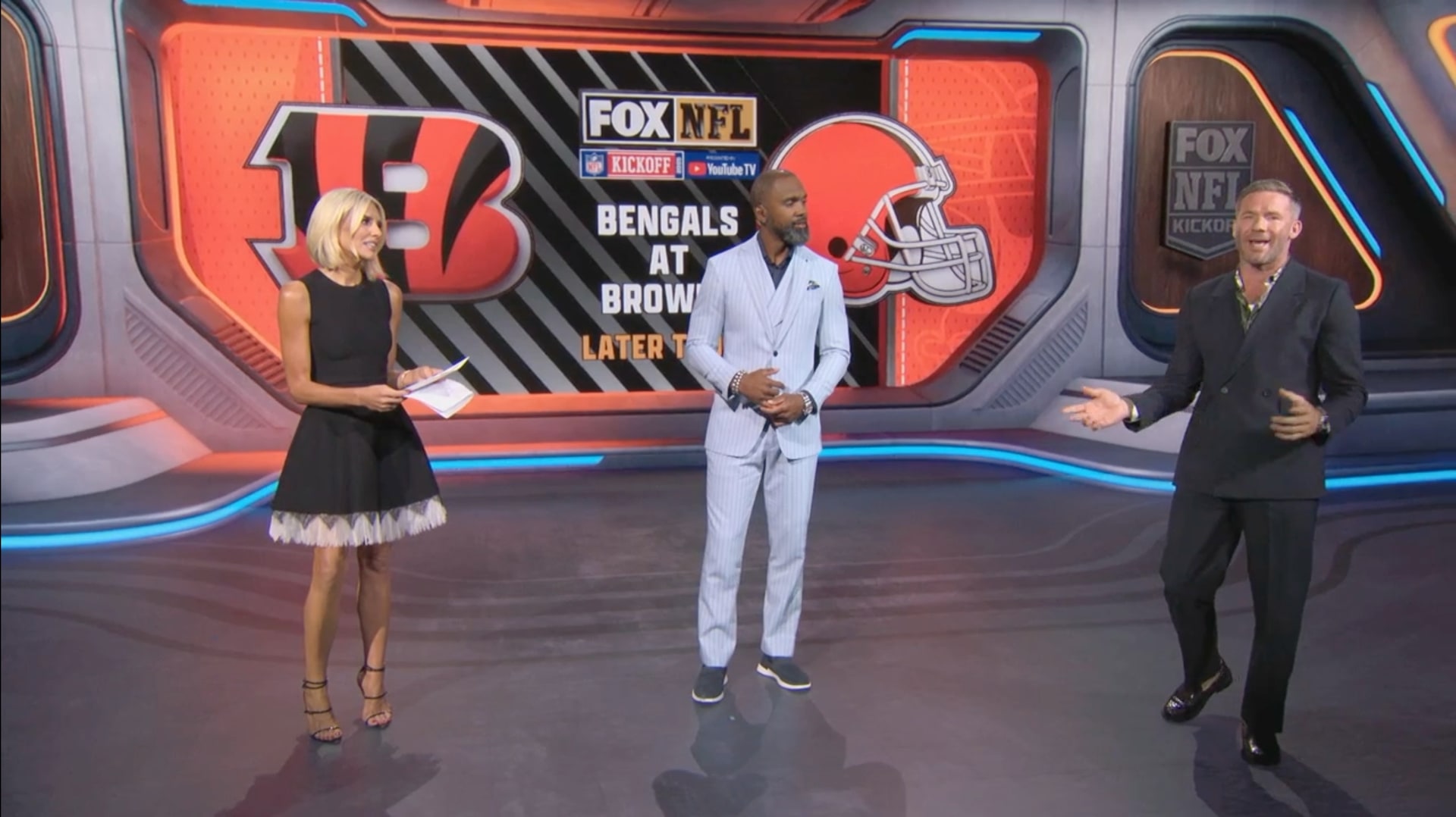
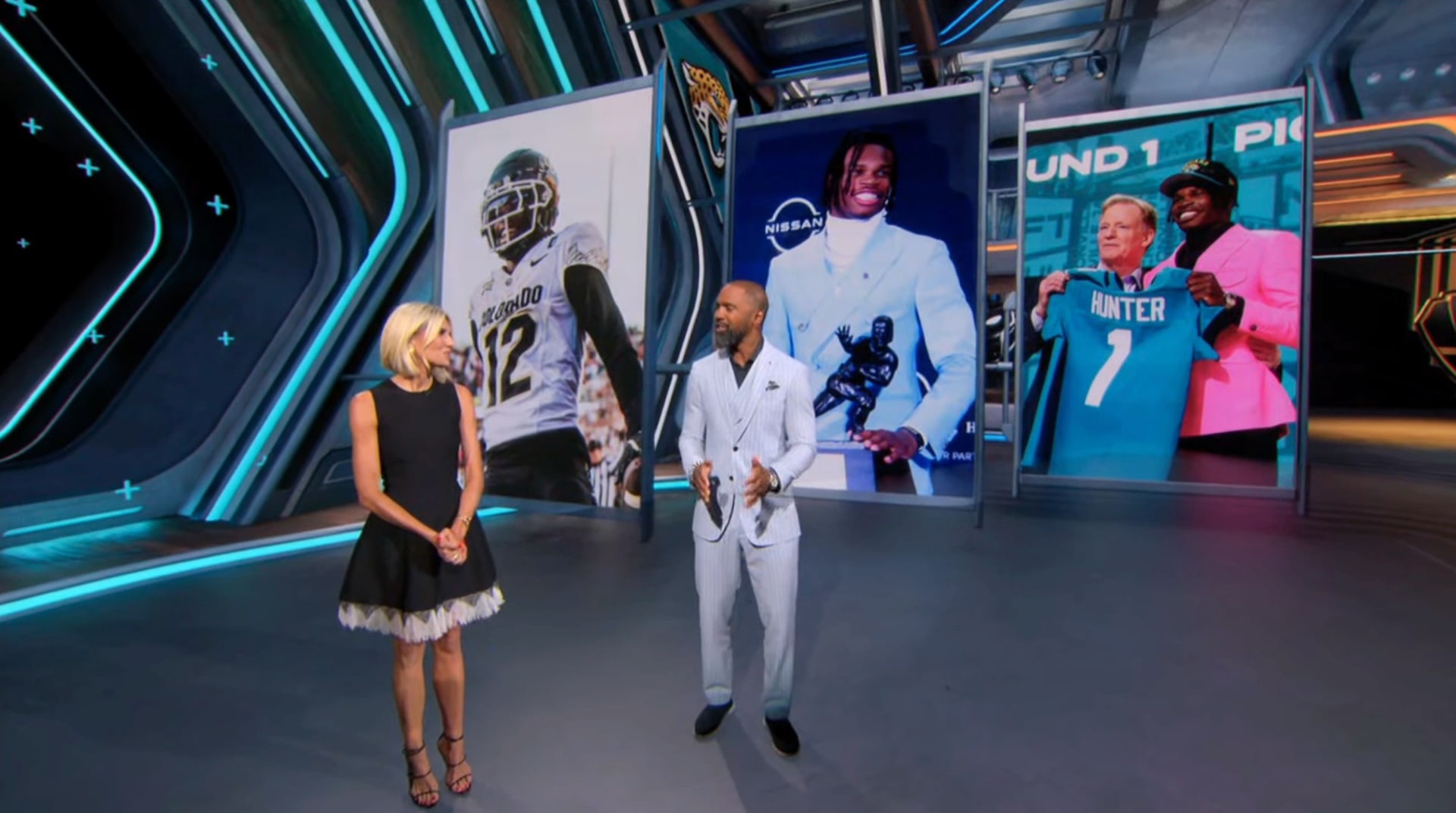
“Each cluster is rendering for an individual camera perspective. Before we even get into the processing and the LED system itself, we’ve coordinated where every camera knows where it’s looking,” said Jeremy Hochman, CEO and co-founder, Megapixel.
An additional eight render engines handle augmented reality composition, bringing the total to 32 concurrent rendering processes. This allows producers to layer virtual elements over the LED environment while maintaining proper perspective geometry for each camera position.
Megapixel’s GhostFrame technology, which Fox Sports has used on Stage A, enables pixel-level content switching based on camera exposure timing. The Stage B implementation scales this approach across nearly 48 million LEDs, with each camera operating at slightly different exposure intervals while the processing system displays the appropriate rendered content for whichever camera is actively capturing.
“Our technology can switch the content based on the timing of the camera,” Hochman said. “We’re able to simultaneously have all of those images up at the same time.”
The synchronization allows for natural directing during live production, restoring workflow flexibility that early virtual technology had constrained.
“There was kind of a time period in which LED was somewhat limiting to the editorial creativity,” Hochman noted. “Now we’ve been able to bring this back with GhostFrame.”
In the studio, ten cameras are present including pedestals, one Steadicam and one 24-foot Techno Jib, with stYpe for camera tracking.
Automation addresses daily production economics
For “The Herd with Colin Cowherd,” which airs five days a week, Fox Sports implemented the XR workflow with automation through Ross Video’s OverDrive system.
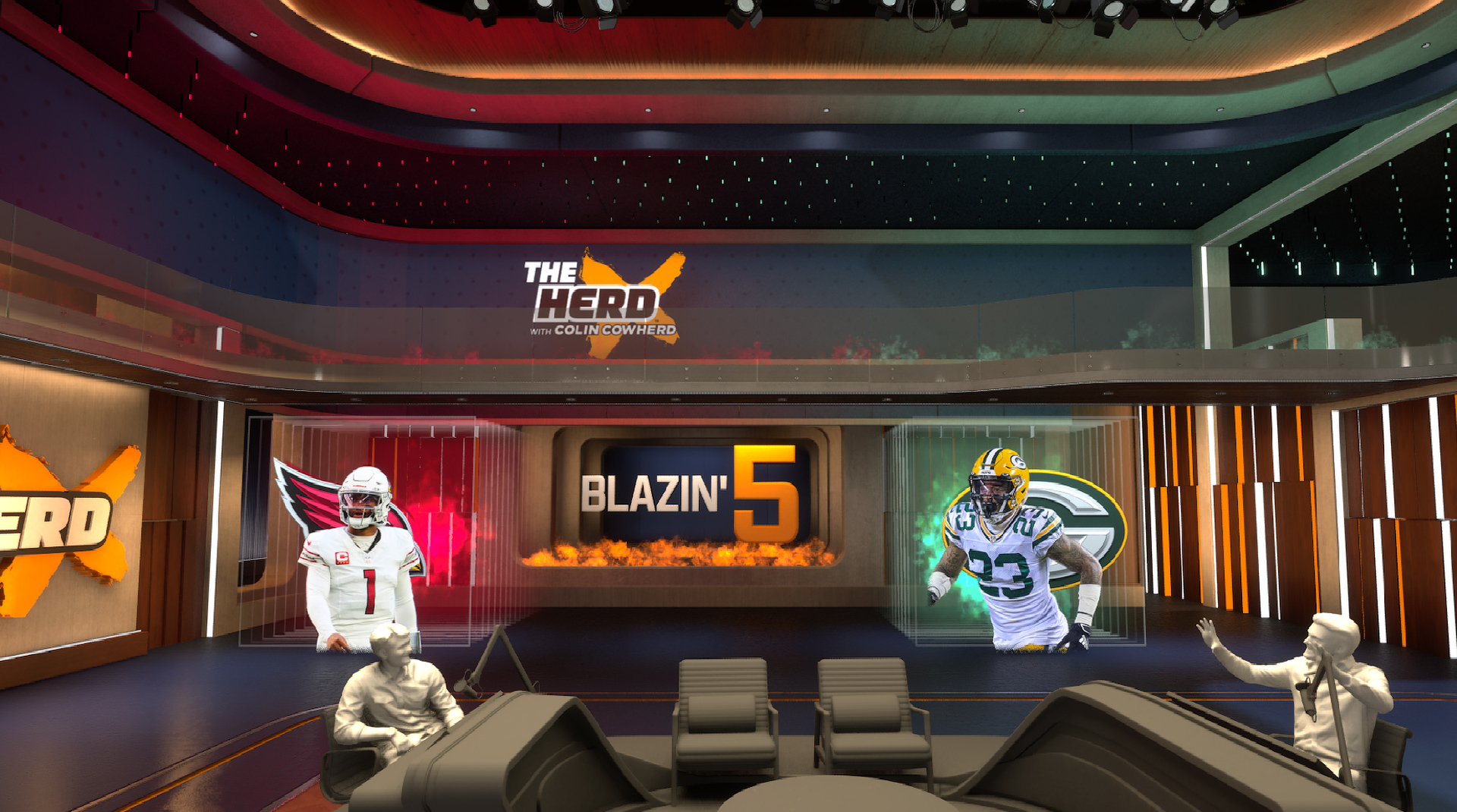
“A show every single day is not going to have the same personnel and budget as your NFL show that’s once a week,” Fields said. “To be able to fire up that studio, to utilize it, you have to come up with new and efficient ways.”
The automation integrates multiple systems through APIs: Megapixel processors, Pixotope rendering software, Ross Video switching and custom middleware developed by Fox Sports’ software team.
A single operator can control set environments, lower thirds, augmented reality elements and camera switching across the canvas, which dynamically reveals content throughout the broadcast.
“All of the content that you see, whether it’s lower thirds, full screens, the set environment, augmented reality, every one of those is driven in an automated fashion,” Fields said. “The OverDrive operator functions as a technical director, a director, a graphic operator.”
While “The Herd” demonstrates Stage B’s automated workflow capabilities, “Fox NFL Kickoff” showcases the facility’s full creative potential with a futuristic scenic design created from curvilinear arches and repeating portals.
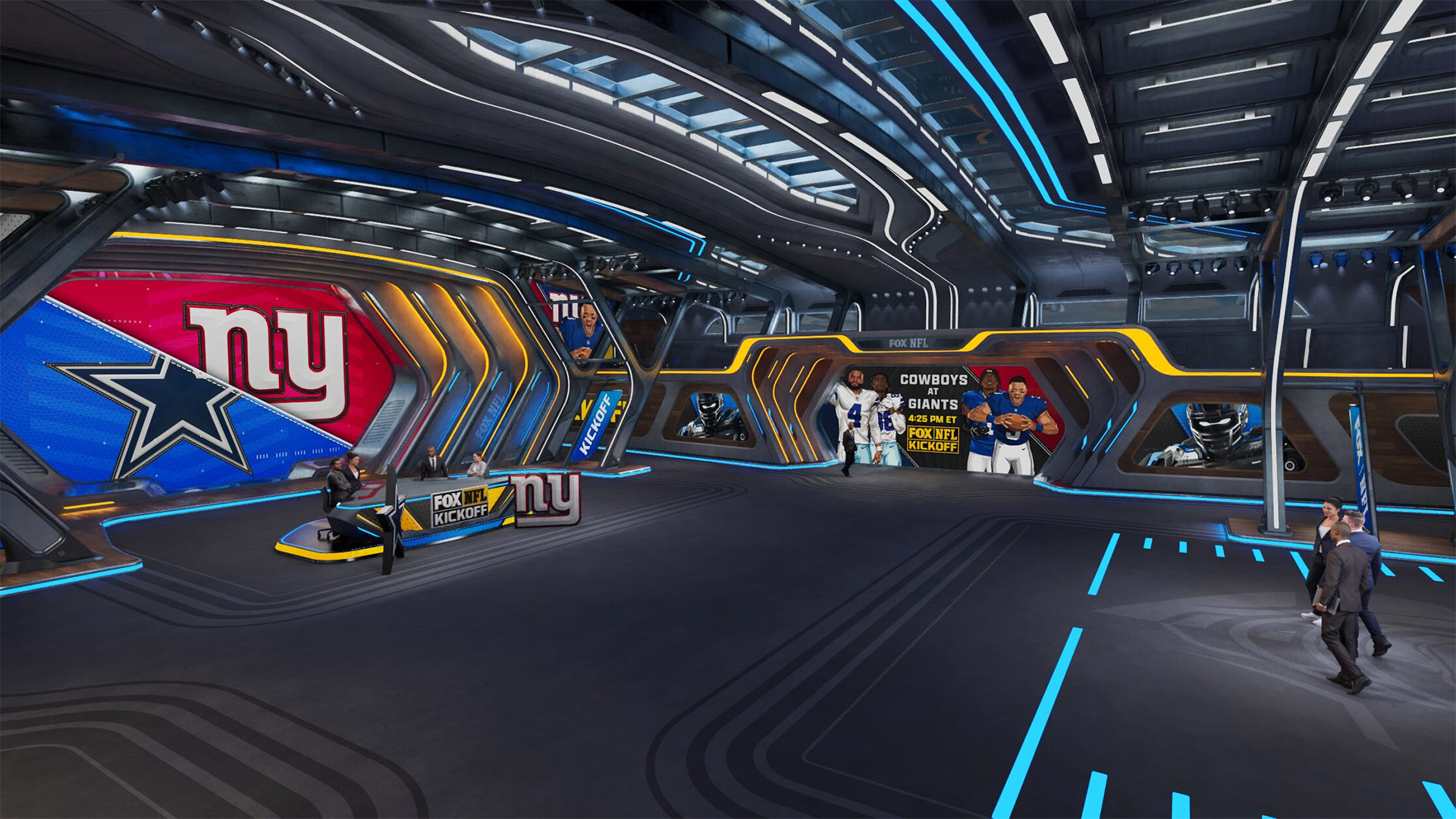
Unlike the more intimate setting created for Cowherd’s daily talk show through strategic lighting and positioning, NFL Kickoff embraces the volume’s scale. The show features what Fields described as architecture that can move to accommodate different types of content with parallaxing walls for augmented reality elements.
“We’ve started with a grand set that has a multitude of functionality,” Fields said. “I think throughout the season, you’ll really see a lot more of that as production kind of gets used to the different functionality.”
The design philosophy differs from traditional broadcast sets, where physical constraints limit architectural possibilities. In the virtual environment, set pieces can transform, appear and disappear as needed for different story segments.


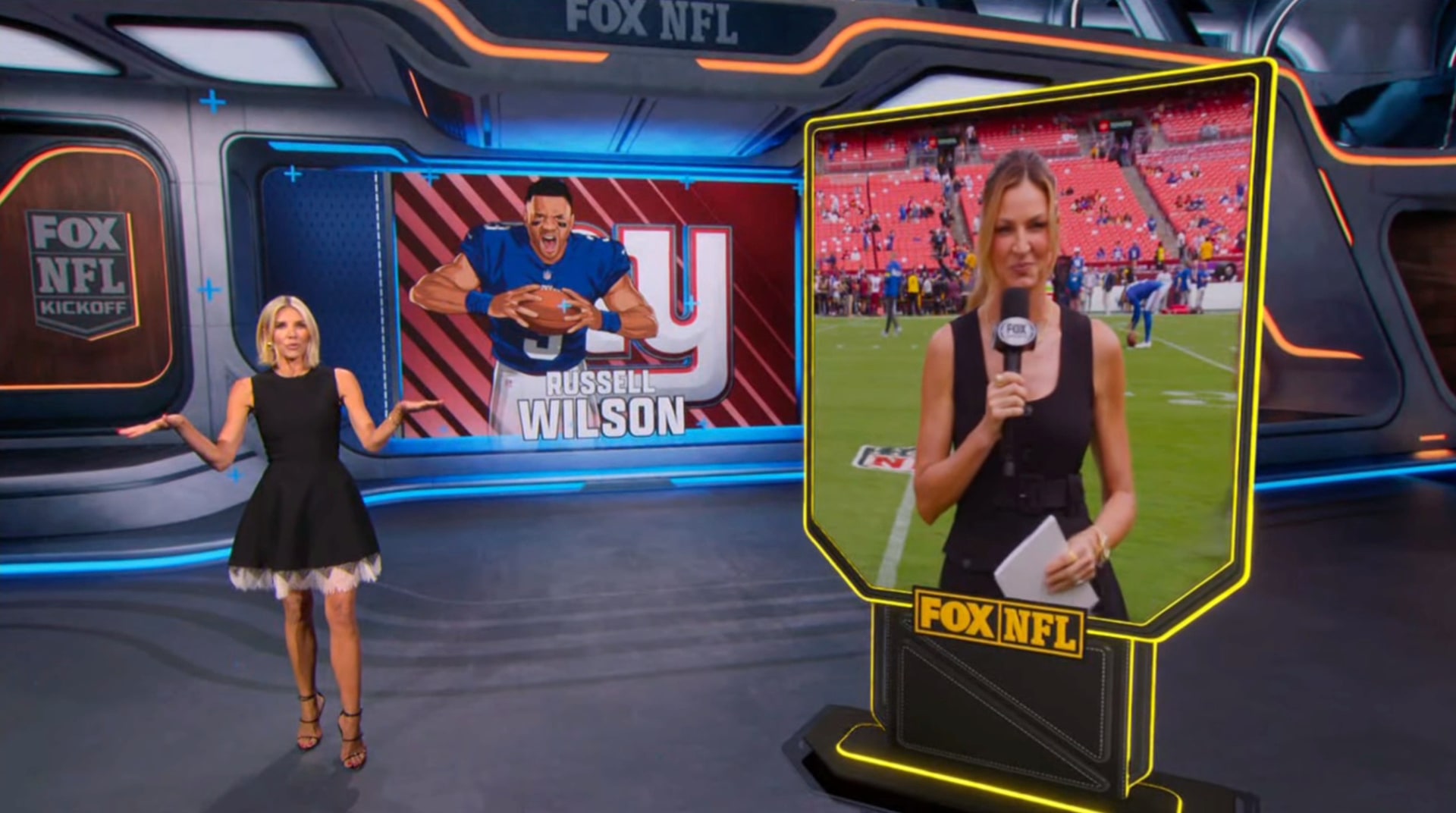
“One of the big things that we’re starting to get into is how do you kind of cook up ideas where you would never be able to do practically, or if you did, it would be so costly, you would never execute that,” Fields said. The virtual environment allows for what he described as “kinetic architecture” where set pieces can transform dynamically.
“We’re not necessarily trying to fool the viewer to think it’s a real set,” Fields explained. “We’re kind of letting them in on the concept that this is kind of this set that can come to life to help tell stories with our production team.”
Architecture Van Brandenburg from New Zealand, which previously designed Fox Sports’ Euro and Copa coverage sets, created the design for “Fox NFL Kickoff.” Jack Morton Worldwide handled the design for “The Herd.”
Fox Sports’ internal Creative Services team translated these concepts into Unreal Engine models, while physical elements like desks and platforms were constructed by IDF Scenic Studios. The stage’s physical infrastructure and automated systems were provided by Showfab, with NEP Sweetwater handling LED integration and Airtime Lighting designing the lighting systems.
Extending virtual production beyond live broadcast
Fox Sports has configured Stage B for feature production with a separate 24-frames-per-second GhostFrame slice optimized for Sony Venice cameras. This allows the network’s feature producers to create premium content without building practical sets or renting external facilities.
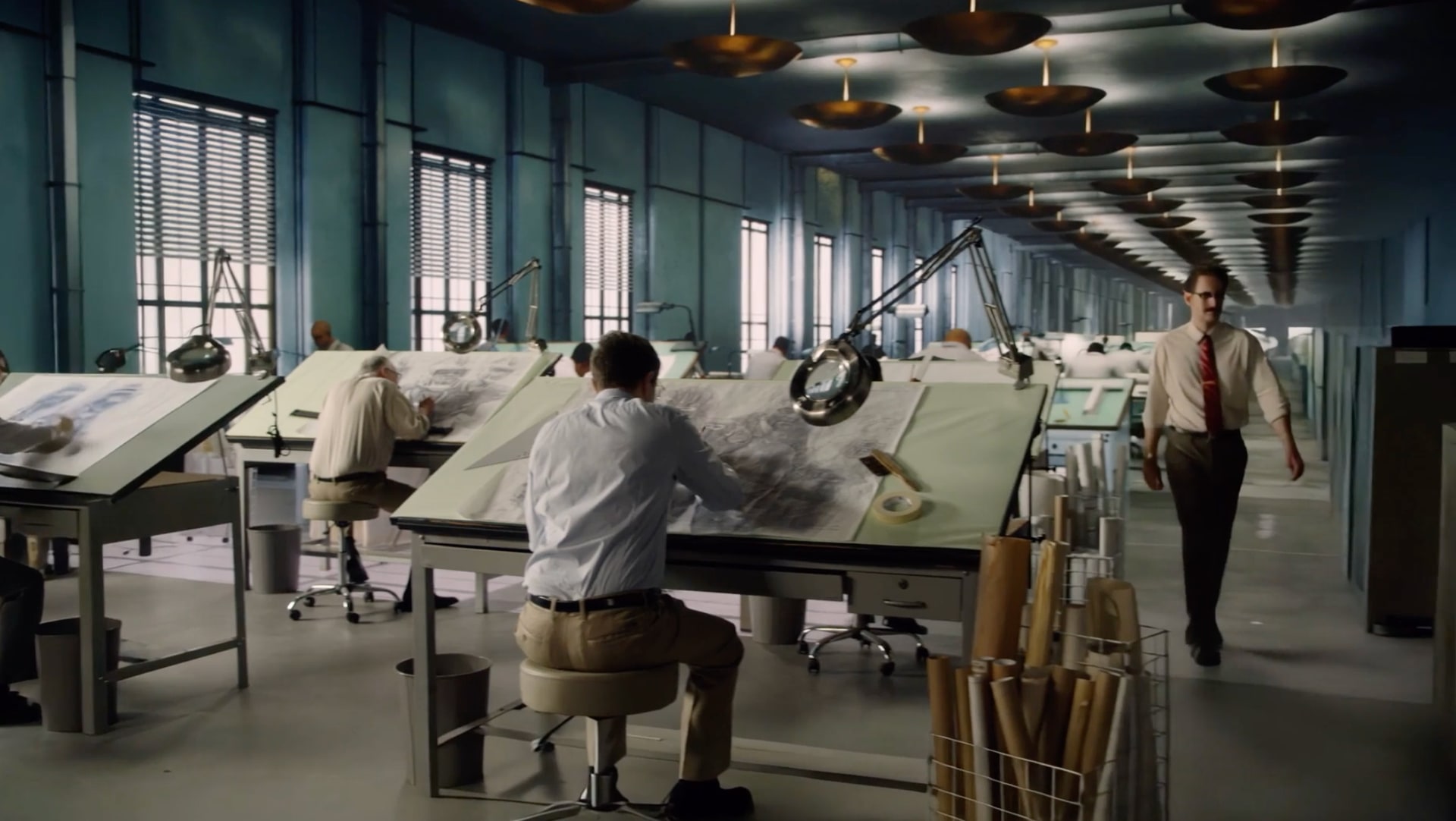
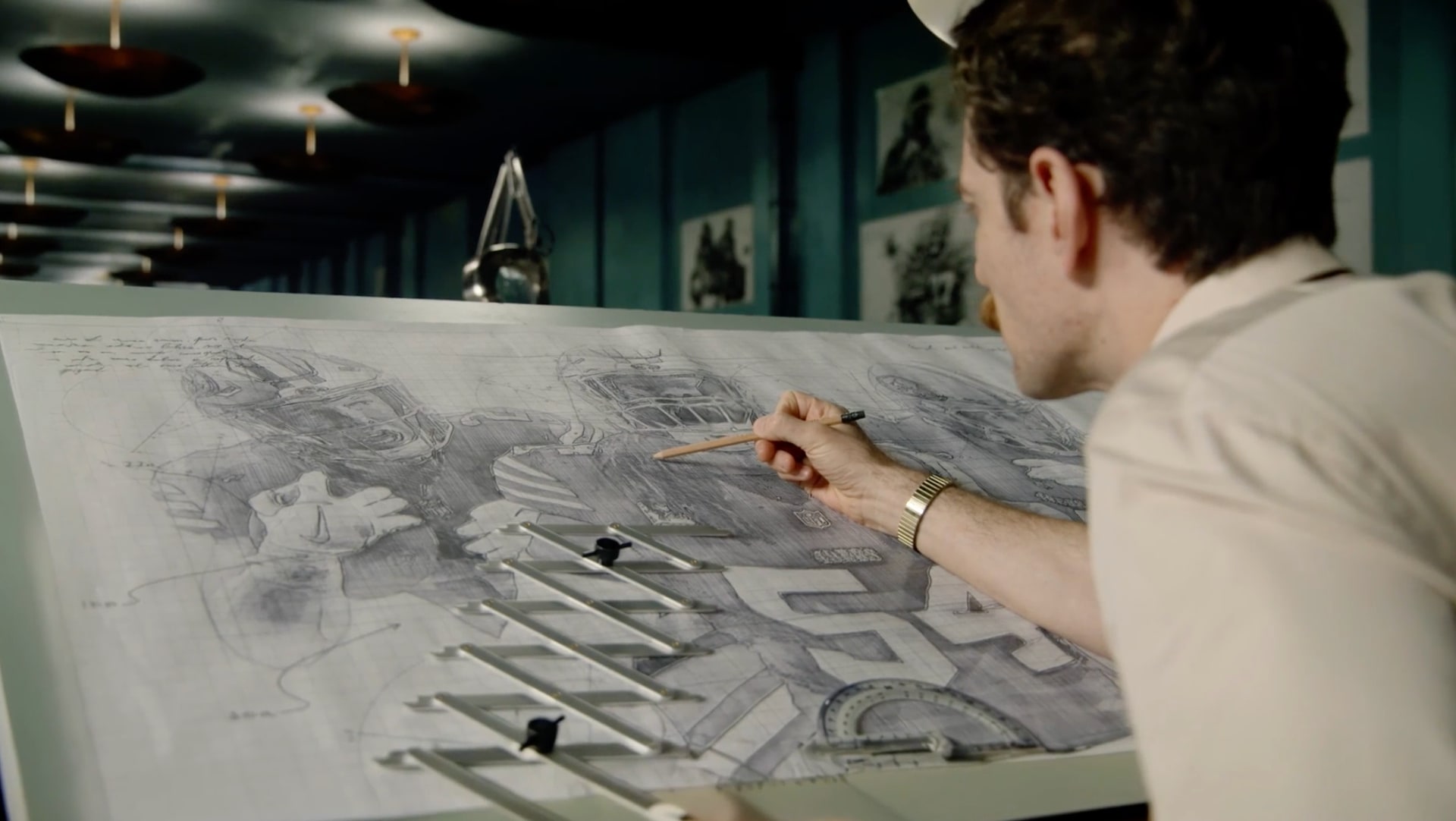
“Our feature producers – rather than having to go somewhere and build a practical set or rent a space – can utilize the stage to tell some pretty interesting stories,” Fields said. The network has accumulated a growing library of virtual environments that can be deployed quickly for various productions.
As Fox Sports approaches the 2026 FIFA World Cup, the new studio’s capabilities will continue to expand and scale up.
“From right now to the end of the football season … compared to what you’ll see for the World Cup is going to be tremendous,” Fields said.
“It’s been amazing to see what you can achieve with this commitment to innovation,” said Fields. “Fox sees that there’s so much more in this avenue… they’re willing to invest in it to see this innovation through to help the overall product.”
Subscribe to NCS for the latest news, project case studies and product announcements in broadcast technology, creative design and engineering delivered to your inbox.


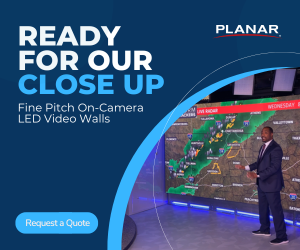



tags
Airtime Lighting Group, Architecture van Brandenburg, colin cowherd, Epic Games Unreal Engine, Fox NFL Kickoff, Fox Sports, fox sports 1, fs1, GhostFrame, IDF Studio Scenery, Jack Morton, Jack Morton Worldwide, LED Volumes, Megapixel, NEP Sweetwater, ROE Visual, Ross Overdrive, Ross Video, ShowFab, showman fabricators, Stype, the herd, the herd with colin cowherd, Unreal Engine, Virtual Production, Zac Fields
categories
Heroes, Set Design, Sports Broadcasting & Production, Sports Set Design, Studio Technology